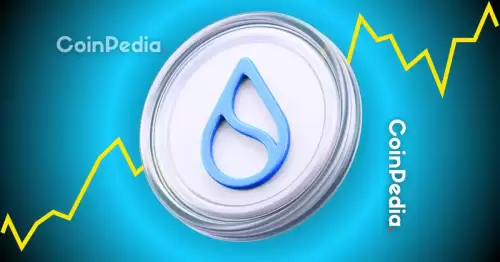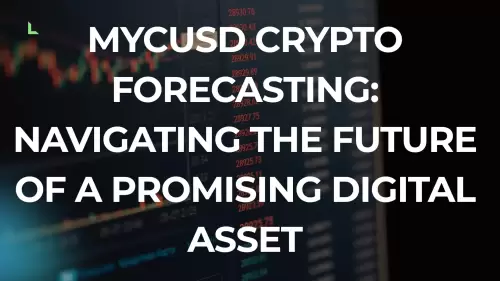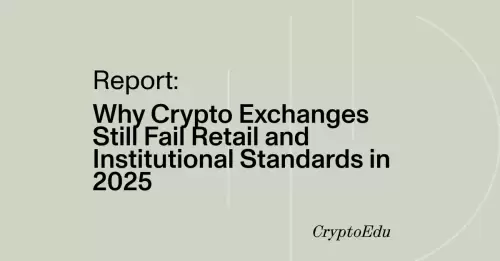 |
|
 |
|
 |
|
 |
|
 |
|
 |
|
 |
|
 |
|
 |
|
 |
|
 |
|
 |
|
 |
|
 |
|
 |
|
暗号通貨のニュース記事
Trading firm QCP Capital has released a new report analyzing unexpected, tectonic shifts in currency markets and their potential impact on the cryptocurrency sector
2025/05/06 20:20

Taiwan's dollar soared 8 percent on Thursday, with the Korean won and other Asia-Pacific currencies with large, persistent current account surpluses also showing gains against the U.S. dollar.
The move saw the spread between the TWD spot rate and the one-year non-deliverable forward widen to 3,000 points, reaching a two-decade high, while trading volumes surged to levels last seen during the 2008 financial crisis.
What Is a Non-Deliverable Forward?
A NDF (Non-Deliverable Forward) is a special financial instrument that allows market participants to transact in currencies whose trading is restricted or hindered by national regulations. Unlike conventional forward contracts, there is no physical delivery of the underlying currency upon execution of NDFs.
The principle behind NDFs is that two parties agree to exchange currencies at a predetermined rate on a specific future date. However, on the settlement date, only the difference between the contracted forward rate and the actual spot rate is settled. Settlement is usually made in a freely convertible currency, most commonly US dollars.
In the context of Taiwan, the wide spread between the spot rate and the NDF suggests considerable uncertainty and speculative pressure on the currency. It indicates a serious discrepancy between the current market valuation of the Taiwan dollar and expectations of its future value.
Reasons for the currency rally
Taiwan is a key net exporter to the US, with its economy heavily reliant on its dominant semiconductor industry. While trade surpluses typically drive structural strengthening of the TWD, this has traditionally been offset by sustained capital outflows. Taiwanese residents hold significant unhedged US dollar assets, which help balance currency dynamics.
The sharp strengthening of the TWD appears to be driven by growing speculation surrounding a potential trade agreement between the US and Taiwan. This is coupled with increased hedging flows from local insurance companies managing dollar risk.
Parallels with the Yen
This situation is reminiscent of the sharp carry-trade reversal in the Japanese yen against the US dollar on August 4 last year. Japan's deep negative yield differential with the US became unsustainable amid macroeconomic shifts.
The negative yield differential meant that interest rates in Japan were significantly lower than in the US. This allowed investors to borrow money in Japan at low interest rates and invest in U.S. assets with higher yields, capitalizing on the difference. When the economic situation changed, this differential became unsustainable, leading to a massive unwinding of such positions and a sharp appreciation of the yen.
While the TWD does not have global reserve status like the JPY, this movement could signal early challenges to existing investment positions in the forex market and a potential reallocation of global capital flows.
Why Is This Important for Cryptocurrencies?
The situation on the cryptocurrency market is quite calm now – there are no sharp price hikes, and the value of digital assets is fluctuating within a narrow range without clear direction. Options traders do not expect significant price changes in the near future.
Meanwhile, currency turmoil coincided with gold’s nearly 3 percent rise on Thursday, as investors braced for a weaker dollar and priced in a geopolitical risk premium, including prospects for U.S. trade diplomacy.
Trading Strategies from QCP
In its report, QCP Capital highlights two possible avenues traders can consider navigating this eventuality.
The first scenario envisages a volatility shock in which Bitcoin detaches itself from gold as a safe haven and begins to play the role of a risky asset once again. This scenario suggests preparing for a potential spike in volatility in the cryptocurrency market in response to the currency crises. To implement this strategy, traders may want to buy options with high gamma exposure, which benefit from sharp price movements regardless of direction.
The second scenario could provide tailwind for trade diplomacy. A stronger Taiwan dollar would strengthen Taiwan’s negotiating position, potentially increasing the likelihood of a trade agreement with the U.S. Under this strategy, investors could consider acquiring assets that have historically benefited from improved trade relations between the U.S. and Asian economies, including certain crypto assets with strong ties to the region.
Each of these strategies requires careful consideration of market conditions and an individual trader’s risk profile. In a market environment where correlations are weakening, currency markets could once again become the canary in the coal mine for the macro economy, concludes QCP.
The Bottom Line
Financial markets stand at a bifurcation point, where currency movements could foreshadow greater structural shifts. Today’s upheavals in the foreign exchange market may shape tomorrow’s trends in digital assets. Closely tracking the interrelationships between traditional financial markets and cryptocurrencies is becoming a crucial skill for investors aiming to stay ahead of market cycles.
免責事項:info@kdj.com
提供される情報は取引に関するアドバイスではありません。 kdj.com は、この記事で提供される情報に基づいて行われた投資に対して一切の責任を負いません。暗号通貨は変動性が高いため、十分な調査を行った上で慎重に投資することを強くお勧めします。
このウェブサイトで使用されているコンテンツが著作権を侵害していると思われる場合は、直ちに当社 (info@kdj.com) までご連絡ください。速やかに削除させていただきます。





























































